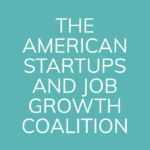Venture Capital Investment at Work
NVCA conducted a survey to identify what happens with venture capital investment once companies receive capital.
Why it matters: The results show that four out of five respondents spent at least 70 percent of their budgets on two activities, wages and compensation and research and development.
Venture capital investment is often associated with job creation and higher wages, innovation, and economic growth, as numerous studies have found. A primary reason for this is the power of equity investment, where investors aligned with the long-term goals of a growth company provide capital to finance activities that lead to value creation over a period of years. We have been interested in learning more about the activities VC-backed companies prioritize to create this growth, so we conducted a survey to identify broadly what happens with venture capital investment once companies receive capital.
The findings, which we are sharing in this post for the first time, are striking. The survey results show that four out of five respondents spent at least 70 percent of their budgets on two activities, wages and compensation and research and development. This statistic highlights the extent to which venture capital finances job creation and innovation despite the risks inherent in funding companies expected to operate in revenue loss positions for years. 57% percent of companies surveyed responded that at least half of their total annual expenses were devoted to compensation, while 48% of companies spent at least 60% of total annual expenses on compensation. These percentages illustrate that startups and growth companies devote considerable amounts of the funds they raise to compensating their workforces.

Innovation is closely linked to productivity growth, a key source of economic growth and essential to progress in living standards. For this reason, the percentages of capital deployed to finance research and development amongst respondent companies are particularly notable. A remarkable 40% of companies reported spending upward of 50% of annual total expenses on research and development (R&D), 30% of companies spent more than 60%, and nearly a quarter (23%) of companies spent more than 70% on R&D.
Data on R&D expenditures for large incumbent corporations provide a useful comparison for our survey data and reveal just how heavily VC-backed companies spend on R&D. In 2018, the average expenditure on R&D as a percentage of revenue for Fortune Global 500 companies was 21.6 percent. The largest spenders were companies in pharmaceuticals, telecommunications, and information technology, none of which spent more than 26% of their revenue on R&D, a percentage which would land them around the bottom third when compared to respondents of our survey. While not necessarily an apples-to-apples comparison (our survey looked at R&D as percentage of expenditures while data regarding incumbent corporations look at R&D as a percentage of revenues), it’s more fair to look at total expenditures for growth companies as they generally are in a loss position and many would report spending on R&D far in excess of total revenues.

There is some interesting variance in the types of investment by the age range of companies. Forty-four percent of companies less than five years old spend at least half of their annual budgets on R&D, while 33% of companies five years and older do so. Conversely, 66% of companies five years and older spent at least half of their budgets on wages and compensation, while 52% of companies less than five years old do. This reflects a common trend in the company building process where firms often shift from research and product development in the startup stages to workforce expansion and other scaling activities in the growth phases.
As we see the one-year mark of the pandemic coming near, policymakers must increasingly focus on policies that rebuild our economy in a manner that makes us stronger and more competitive for the future following this crisis. This data confirms that encouraging greater startup activity throughout the country will lead to greater job creation and innovation, establishing a stronger base on which to build for the future. In addition, with many of these companies exploring solutions to broader societal challenges such as climate change and agricultural sustainability, the COVID crisis, and access to education, policymakers can address economic competitiveness and many critical societal challenges concurrently.
The Innovation and Growth Now by Investing in Tomorrow’s Enterprises (IGNITE) American Innovation Act is a bipartisan proposal that accomplishes exactly these objectives. This bill will allow high-growth companies to monetize up to $25 million in tax assets, providing liquidity to these companies through the downturn that can be used for job creation and R&D efforts, creating jobs now in a way that strengthens our economic future. And much of the cost of this bill will be offset over time through higher tax payments should these companies become profitable.
For instance, Illinois-based battery maker, NanoGraf, is developing a technological breakthrough in the performance capacity of batteries. But long research cycles mean NanoGraf can’t rely on short-term profits to survive. This proposal will provide companies like NanoGraf with capital now that will create jobs and drive innovation, strengthening the domestic battery industry—which is currently concentrated largely outside the United States—thereby improving the nation’s energy independence.
This survey showing such high percentages of expenditures for compensation and research and development among the startups and growth companies that make up the innovation economy is yet another powerful argument that economic development in the 21st century must focus on new company formation. Here’s hoping policymakers can work together and use this engine of opportunity to make progress in the country, and allow entrepreneurs to lead our post pandemic economic recovery.
Click here to see the full survey results.
*The American Startups and Job Growth Coalition includes: NVCA, TechNet, BIO, the Medical Device Manufacturers Association (MDMA), AdvaMed, the Center for American Entrepreneurship (CAE), Angel Capital Association (ACA), and the Technology Councils of North America (TECHNA).
For press inquiries, please contact Devin Miller at dmiller@nvca.org

